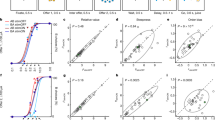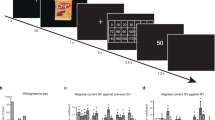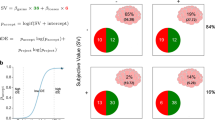Abstract
Estimating the value of alternative options is a key process in decision-making. Human functional magnetic resonance imaging and monkey electrophysiology studies have identified brain regions, such as the ventromedial prefrontal cortex (vmPFC) and lateral orbitofrontal cortex (lOFC), composing a value system. In the present study, in an effort to bridge across species and techniques, we investigated the neural representation of value ratings in 36 people with epilepsy, using intracranial electroencephalography. We found that subjective value was positively reflected in both vmPFC and lOFC high-frequency activity, plus several other brain regions, including the hippocampus. We then demonstrated that subjective value could be decoded (1) in pre-stimulus activity, (2) for various categories of items, (3) even during a distractive task and (4) as both linear and quadratic signals (encoding both value and confidence). Thus, our findings specify key functional properties of neural value signals (anticipation, generality, automaticity, quadraticity), which might provide insights into human irrational choice behaviors.
This is a preview of subscription content, access via your institution
Access options
Access Nature and 54 other Nature Portfolio journals
Get Nature+, our best-value online-access subscription
$29.99 / 30 days
cancel any time
Subscribe to this journal
Receive 12 print issues and online access
$209.00 per year
only $17.42 per issue
Buy this article
- Purchase on Springer Link
- Instant access to full article PDF
Prices may be subject to local taxes which are calculated during checkout







Similar content being viewed by others
Data availability
The data that support the findings of this study are available from the corresponding author (A.L.-P.) upon request.
Code availability
The custom code used to generate the figures and statistics are available from the corresponding author (A.L.-P.) upon request.
References
Krajbich, I., Armel, C. & Rangel, A. Visual fixations and the computation and comparison of value in simple choice. Nat. Neurosci. 13, 1292–1298 (2010).
Hunt, L. T. et al. Mechanisms underlying cortical activity during value-guided choice. Nat. Neurosci. 15, 470–S3 (2012).
O’Doherty, J. P. The problem with value. Neurosci. Biobehav. Rev. 43, 259–268 https://doi.org/10.1016/j.neubiorev.2014.03.027 (2014).
Juechems, K. & Summerfield, C. Where does value come from? Trends Cogn. Sci. 23, 836–850 (2019).
Lopez-Persem, A., Rigoux, L., Bourgeois-Gironde, S., Daunizeau, J. & Pessiglione, M. Choose, rate or squeeze: comparison of economic value functions elicited by different behavioral tasks. PLoS Comput. Biol. 13, e1005848 (2017).
Rangel, A., Camerer, C. & Montague, P. R. A framework for studying the neurobiology of value-based decision making. Nat. Rev. Neurosci. 9, 545–556 (2008).
Bartra, O., McGuire, J. T. & Kable, J. W. The valuation system: a coordinate-based meta-analysis of BOLD fMRI experiments examining neural correlates of subjective value. NeuroImage 76, 412–427 (2013).
Peters, J. & Büchel, C. Episodic future thinking reduces reward delay discounting through an enhancement of prefrontal-mediotemporal interactions. Neuron 66, 138–148 (2010).
Lebreton, M. et al. A critical role for the hippocampus in the valuation of imagined outcomes. PLoS Biol. 11, e1001684 (2013).
Schacter, D. L., Addis, D. R. & Buckner, R. L. Remembering the past to imagine the future: the prospective brain. Nat. Rev. Neurosci. 8, 657–661 (2007).
Barron, H. C., Dolan, R. J. & Behrens, T. E. J. Online evaluation of novel choices by simultaneous representation of multiple memories. Nat. Neurosci. 16, 1492–1498 (2013).
O’Doherty, J., Kringelbach, M. L., Rolls, E. T., Hornak, J. & Andrews, C. Abstract reward and punishment representations in the human orbitofrontal cortex. Nat. Neurosci. 4, 95–102 (2001).
Zhang, Z. et al. Distributed neural representation of saliency controlled value and category during anticipation of rewards and punishments. Nat. Commun. 8, 1907 (2017).
Bouret, S. & Richmond, B. J. Ventromedial and orbital prefrontal neurons differentially encode internally and externally driven motivational values in monkeys. J. Neurosci. 30, 8591–8601 (2010).
Strait, C. E., Blanchard, T. C. & Hayden, B. Y. Reward value comparison via mutual inhibition in ventromedial prefrontal cortex. Neuron 82, 1357–1366 (2014).
Padoa-Schioppa, C. Orbitofrontal cortex and the computation of economic value. Ann. N. Y. Acad. Sci. 1121, 232–253 (2007).
Tremblay, L. & Schultz, W. Relative reward preference in primate orbitofrontal cortex. Nature 398, 705–708 (1999).
Saez, I. et al. Encoding of multiple reward-related computations in transient and sustained high-frequency activity in human OFC. Curr. Biol. 28, 2889–2899 (2018).
Abitbol, R. et al. Neural mechanisms underlying contextual dependency of subjective values: converging evidence from monkeys and humans. J. Neurosci. 35, 2308–2320 (2015).
Vinckier, F., Rigoux, L., Oudiette, D. & Pessiglione, M. Neuro-computational account of how mood fluctuations arise and affect decision making. Nat. Commun. 9, 1708 (2018).
Chib, V. S., Rangel, A., Shimojo, S. & O’Doherty, J. P. Evidence for a common representation of decision values for dissimilar goods in human ventromedial prefrontal cortex. J. Neurosci. 29, 12315–12320 (2009).
Lebreton, M., Jorge, S., Michel, V., Thirion, B. & Pessiglione, M. An automatic valuation system in the human brain: evidence from functional neuroimaging. Neuron 64, 431–439 (2009).
Levy, D. J. & Glimcher, P. W. The root of all value: a neural common currency for choice. Curr. Opin. Neurobiol. 22, 1027–1038 (2012).
Levy, I., Lazzaro, S. C., Rutledge, R. B. & Glimcher, P. W. Choice from non-choice: predicting consumer preferences from blood oxygenation level-dependent signals obtained during passive viewing. J. Neurosci. 31, 118–125 (2011).
De Martino, B., Fleming, S. M., Garrett, N. & Dolan, R. J. Confidence in value-based choice. Nat. Neurosci. 16, 105–110 (2013).
Lebreton, M., Abitbol, R., Daunizeau, J. & Pessiglione, M. Automatic integration of confidence in the brain valuation signal. Nat. Neurosci. 18, 1159–1167 (2015).
Tzourio-Mazoyer, N. et al. Automated anatomical labeling of activations in SPM using a macroscopic anatomical parcellation of the MNI MRI single-subject brain. NeuroImage 15, 273–289 (2002).
Logothetis, N. K., Pauls, J., Augath, M., Trinath, T. & Oeltermann, A. Neurophysiological investigation of the basis of the fMRI signal. Nature 412, 150–157 (2001).
Scheeringa, R. et al. Neuronal dynamics underlying high- and low-frequency EEG oscillations contribute independently to the human BOLD signal. Neuron 69, 572–583 (2011).
Ray, S., Crone, N. E., Niebur, E., Franaszczuk, P. J. & Hsiao, S. S. Neural correlates of high-gamma oscillations (60–200 Hz) in macaque local field potentials and their potential implications in electrocorticography. J. Neurosci. 28, 11526–11536 (2008).
Bastin, J. et al. Direct recordings in human cortex reveal the dynamics of gamma-band [50–150 Hz] activity during pursuit eye movement control. NeuroImage 63, 339–347 (2012).
Jerbi, K. et al. Task-related gamma-band dynamics from an intracerebral perspective: review and implications for surface EEG and MEG. Hum. Brain Mapp. 30, 1758–1771 (2009).
Lachaux, J.-P., Axmacher, N., Mormann, F., Halgren, E. & Crone, N. E. High-frequency neural activity and human cognition: Past, present and possible future of intracranial EEG research. Prog. Neurobiol. 98, 279–301 (2012).
Holm, S. A simple sequentially rejective multiple test procedure. Scand. J. Stat. 6, 65–70 (1979).
Wallis, J. D. & Kennerley, S. W. Heterogeneous reward signals in prefrontal cortex. Curr. Opin. Neurobiol. 20, 191–198 (2010).
Hunt, L. T. & Hayden, B. Y. A distributed, hierarchical and recurrent framework for reward-based choice. Nat. Rev. Neurosci. 18, 172–182 (2017).
Buzsáki, G., Anastassiou, C. A. & Koch, C. The origin of extracellular fields and currents—EEG, ECoG, LFP and spikes. Nat. Rev. Neurosci. 13, 407–420 (2012).
Harvey, A. H., Kirk, U., Denfield, G. H. & Montague, P. R. Monetary favors and their influence on neural responses and revealed preference. J. Neurosci. 30, 9597–9602 (2010).
Hare, T. A., Camerer, C. F. & Rangel, A. Self-control in decision-making involves modulation of the vmPFC valuation system. Science 324, 646–648 (2009).
Kable, J. W. & Glimcher, P. W. The neural correlates of subjective value during intertemporal choice. Nat. Neurosci. 10, 1625–1633 (2007).
Watson, K. K. & Platt, M. L. Social signals in primate orbitofrontal cortex. Curr. Biol. 22, 2268–2273 (2012).
Azzi, J. C. B., Sirigu, A. & Duhamel, J.-R. Modulation of value representation by social context in the primate orbitofrontal cortex. Proc. Natl Acad. Sci. USA 109, 2126–2131 (2012).
Grueschow, M., Polania, R., Hare, T. A. & Ruff, C. C. Automatic versus choice-dependent value representations in the human brain. Neuron 85, 874–885 (2015).
Grabenhorst, F. & Rolls, E. T. Selective attention to affective value alters how the brain processes taste stimuli. Eur. J. Neurosci. 27, 723–729 (2008).
Mainen, Z. F. & Kepecs, A. Neural representation of behavioral outcomes in the orbitofrontal cortex. Curr. Opin. Neurobiol. 19, 84–91 (2009).
Lachaux, J. P., Rudrauf, D. & Kahane, P. Intracranial EEG and human brain mapping. J. Physiol. Paris 97, 613–628 (2003).
Talairach, J. & Tournoux, P. Co-Planar Stereotaxic Atlas of the Human Brain. 3-Dimensional Proportional System: An Approach to Cerebral Imaging (Thieme Medical Publishers, 1988).
Perez-Garcia, F. et al. Automatic segmentation of depth electrodes implanted in epileptic patients: a modular tool adaptable to multicentric protocols. Epilepsia 56, 227 (2015).
Oostenveld, R., Fries, P., Maris, E. & Schoffelen, J.-M. FieldTrip: open source software for advanced analysis of MEG, EEG, and invasive electrophysiological data. Comput. Intell. Neurosci. 2011, https://doi.org/10.1155/2011/156869 (2011).
Rigoux, L., Stephan, K. E., Friston, K. J. & Daunizeau, J. Bayesian model selection for group studies—revisited. NeuroImage 84, 971–985 (2014).
Stephan, K. E., Penny, W. D., Daunizeau, J., Moran, R. J. & Friston, K. J. Bayesian model selection for group studies. NeuroImage 46, 1004–1017 (2009).
Bastin, J. et al. Direct recordings from human anterior insula reveal its leading role within the error-monitoring network. Cereb. Cortex 27, 1545–1557 (2016).
Maris, E. & Oostenveld, R. Nonparametric statistical testing of EEG- and MEG-data. J. Neurosci. Methods 164, 177–190 (2007).
Acknowledgements
We thank J.-P. Lachaux, M. El Zein, S. Bouret and E. Procyk for their helpful comments on the analysis of iEEG data, and Institut du Cerveau et de la Moelle épinière for purchasing the acquisition material. This work benefited from the program ‘Investissements d’Avenir’ (ANR-10-IAIHU-06), from the European Union’s Horizon 2020 Research and Innovation Programme under grant agreement no. 720270 (HBP SGA1) and no. 785907 (HBP SGA2), from the LABEX CORTEX (ANR-11-LABX-0042) of Université de Lyon, within the program ‘Investissements d’Avenir’ (ANR-11-IDEX-0007), from IHU CESAME, within the program ‘Investissements d’Avenir’ (ANR-10-IBHU-0003), and from University Grenoble Alpes, within the program ‘Investissements d’Avenir’ (ANR-17-CE37-0018 and ANR-18-CE28-0016). A.L-P. received a PhD fellowship from Direction Générale de l’Armement and a grant from LabEx Bio-Psy. The funders had no role in study design, data collection and analysis, decision to publish or preparation of the manuscript.
Author information
Authors and Affiliations
Contributions
M. Pessiglione designed all the experiments. A.L.-P., J.B., M. Petton and R.A. collected the data. J.B. provided preprocessing scripts. A.L.-P. performed the data analysis. C.A., V.N., S.R. and P.K. did the intracranial investigation and allowed the collection of iEEG data. K.L. supervised the access to patients in Paris. P.D. provided tools for the time–frequency analysis. A.L-P. and M. Pessiglione wrote the manuscript. All the authors discussed the results and commented on the manuscript.
Corresponding authors
Ethics declarations
Competing interests
The authors declare no competing interests.
Additional information
Publisher’s note Springer Nature remains neutral with regard to jurisdictional claims in published maps and institutional affiliations.
Extended data
Extended Data Fig. 1 Distribution of ratings.
The different plots show distributions across rating types (first-order and second-order), tasks (age and likeability rating), stimuli (food, faces and paintings). Different colors correspond to different patients. Age ratings were restricted to the range 20-50 years old for faces and to the dates 1400-2000 for paintings.
Extended Data Fig. 2 Distribution of response times.
Two times were considered: response onset (first key press made to move the cursor and response validation (press of the validation key). Note that response onset for confidence rating was not recorded. The different plots show distributions across rating types (first-order and second-order), tasks (age and likeability rating), stimuli (food, faces and paintings). Different colors correspond to different patients.
Extended Data Fig. 3 Anatomical locations of vmPFC, lOFC, hippocampus and PHC recording sites in the whole and restricted datasets.
Top. Axial (top) and sagittal (bottom) slices of a brain template on which were superimposed the approximate locations of vmPFC (red), lOFC (blue), hippocampus (green) and PHC (brown) recording sites in all patients. Each dot represents one recording site. Bottom. Axial (top) and sagittal (bottom) slices of a brain template on which were superimposed the approximate locations of vmPFC, lOFC, hippocampus and PHC recording sites in patients who completed the long version of the task. Each dot represents one recording site. Different colors correspond to different patients.
Extended Data Fig. 4 Anatomical dissociation of the vmPFC and lOFC.
Left: Coronal view of the BVS, formed by the lOFC (blue) and the vmPFC (red). Right: Regression estimates of gamma and high gamma binned in function of the x-MNI location of each recording site. Dots (and error bars) indicate mean (and SEM) across n = 450 power time series. Solid curves represent a second-order polynomial fit across regression estimates, applied separately to each subpart of the BVS. Regression estimates varied with laterality (x-MNI coordinate), with a maximum at the center of each ROI (around x = −10 and 10 for vmPFC, and x=−30 and 30 for lOFC), supporting the anatomical position of the boundaries between ROIs.
Extended Data Fig. 5 Time-frequency investigation of the evoked response in supplementary BVS regions.
a, Anatomical localization of the inferior temporal cortex, fusiform anterior gyrus, anterior cingulate gyrus and opercular part of the inferior frontal gyrus (one line per region). All recording sites located in those (bilateral) areas were included in the ROI analysis. N indicates the number of recording sites in each ROI. b, Time-frequency analysis of the evoked response following visual item onset (dashed vertical line) averaged over all recording sites and all food likeability rating trials. Hotter colors indicate higher power. Horizontal dashed lines indicate boundaries between frequency bands that are investigated in panels c and d. c, Regression estimates of power against food likeability rating, averaged over the 0.5-1 s window, for each frequency band defined in b. Center lines, center circles, box limits, whiskers and points of the box plots respectively represent median, mean, interquartile range, extreme data points and outliers of the data distribution. Black stars indicate significance of regression estimates (two-sided one-sample t-test, p<0.05). d, Time course of regression estimates for the gamma and high-gamma frequency band. Stars indicate significant regression estimate (two-sided one-sample t-test, p<0.05, uncorrected) at each time point. Shaded areas highlight the time window of interest used in c and in following analyses. n indicates the number of power time series included in the analysis. Solid (dashed) lines indicates mean (SEM) across power time series.
Extended Data Fig. 6 Decoding food likeability rating from high-frequency OFC (top, purple) and (P)HC (bottom, yellow) activity.
Left: Time course of decoding accuracy from OFC (top, pooling vmPFC and lOFC) and (P)HC (bottom, pooling hippocampus and PHC) signals. Solid lines represent mean accuracy across 100 testing folds from 225 (and 201) recording sites in the OFC (and (P)HC) in the high frequencies (gamma and high gamma) and dashed lines represent SEM (across tested folds). The accuracy of the classifier was tested against the accuracy of a classifier trained on shuffled ratings (grey line). Stars indicate significant difference (two-sided one-sample t-test, p<0.05, cluster-wise corrected across time points). Right: Regions of interest used in each time course. Red: vmPFC, blue: lOFC, green: hippocampus, brown: PHC.
Extended Data Fig. 7 High-frequency activity in the BVS sorted by likeability rating tertiles (high and low).
High-gamma activity in each ROI (vmPFC in red, lOFC in blue, hippocampus in green and PHC in orange/brown) was averaged separately for first (low, dark) and third (high, light) tertiles of likeability ratings, during both food likeability rating task and non-food age rating task. Solid lines indicate mean and dashed lines indicate SEM across all trials, independently of patients and recording sites. nt indicates the number of power time series (trials) included in the analysis.
Extended Data Fig. 8 Linear and quadratic links with food likeability in the BVS.
BVS: comparison between short and long versions of the task, and between squared rating and confidence judgment. a,b, Time courses of regression estimates obtained for linear (top) and squared (bottom) food likeability, locked on stimulus onset (left) or first button press (right), during the short (a) or long (b) version of the task. c, Time courses of regression estimates for squared first-order judgment (top) and confidence on these judgments (bottom), locked on stimulus onset (left) or first button press (right). First-order judgments mean age and likeability ratings pooled together. Solid lines indicate mean and dashed lines indicate SEM across recording sites. Stars indicate significant regression estimate (two-sided one-sample t-test, p<0.05, uncorrected) at each time point. Statistics: a. (post-stimulus: OFC: t(323)=4.43, p=1.10-5, (P)HC: t(255)=4.54, p=9.10-6; pre-response: OFC: t(323)=5.36, p=2.10-7, (P)HC: t(255)=6.43, p=6.10-10; two-sided one-sample t-tests). c. Regression against actual confidence judgments in OFC: squared first-order ratings, post-stimulus: t(125)=5.87, p=4.10-8; pre-response: t(125)=5.88, p=3.10-8; confidence ratings, post-stimulus: t(125)=5.05, p=1.10-6 ; pre-response: t(125)=3.57, p=5.10-4.
Supplementary information
Supplementary Information
Supplementary Figs. 1 and 2.
Supplementary Tables 1–8
Contains eight tabs with eight supplementary tables cited in the main text.
Rights and permissions
About this article
Cite this article
Lopez-Persem, A., Bastin, J., Petton, M. et al. Four core properties of the human brain valuation system demonstrated in intracranial signals. Nat Neurosci 23, 664–675 (2020). https://doi.org/10.1038/s41593-020-0615-9
Received:
Accepted:
Published:
Issue Date:
DOI: https://doi.org/10.1038/s41593-020-0615-9
This article is cited by
-
The online metacognitive control of decisions
Communications Psychology (2024)
-
Temporally organized representations of reward and risk in the human brain
Nature Communications (2024)
-
Genetic effects on variability in visual aesthetic evaluations are partially shared across visual domains
Communications Biology (2024)
-
The role of memory in creative ideation
Nature Reviews Psychology (2023)
-
Human thalamic low-frequency oscillations correlate with expected value and outcomes during reinforcement learning
Nature Communications (2023)



